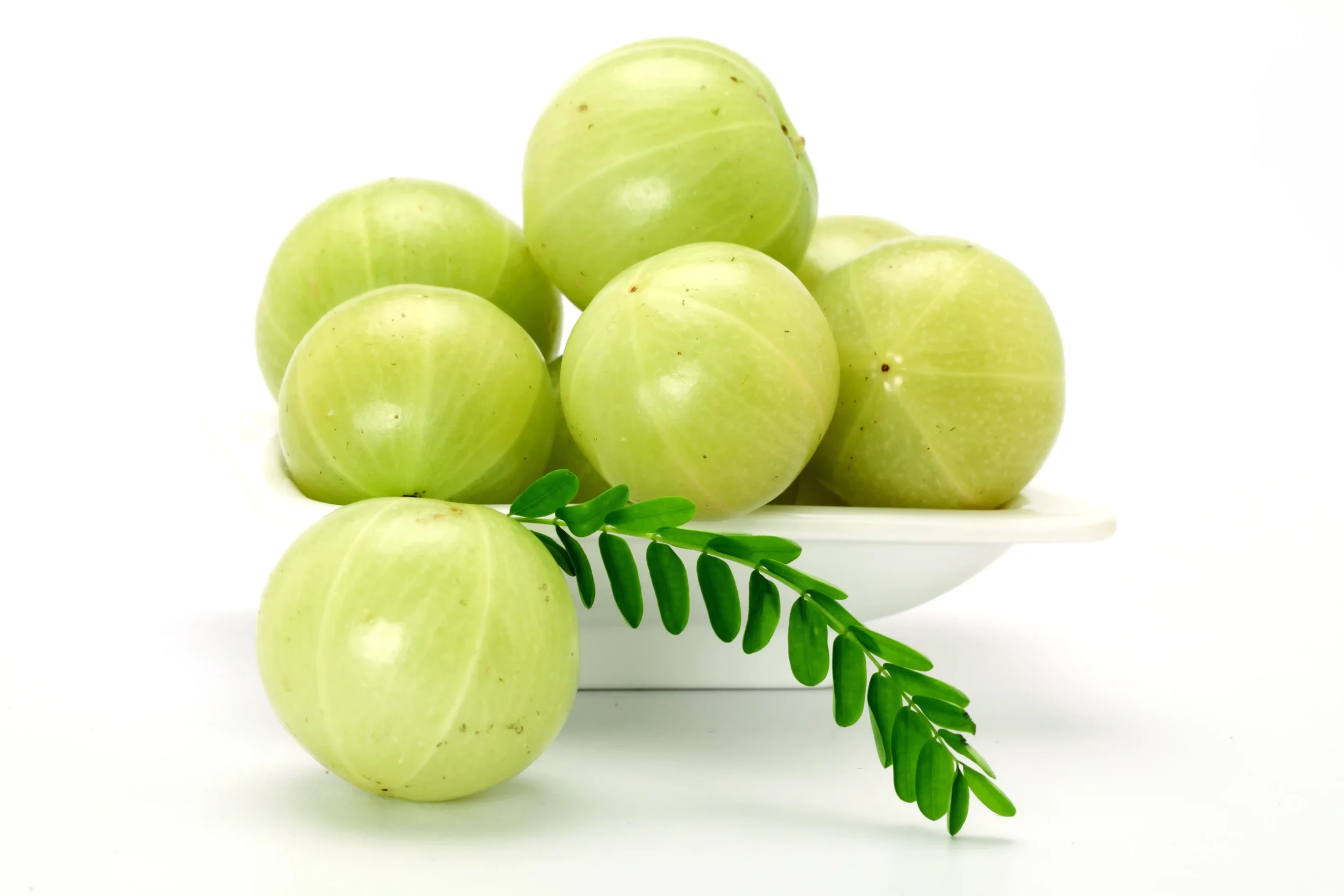


Amla, also known as Indian gooseberry, has gained considerable popularity as a potential remedy for diabetes. As the number of individuals diagnosed with diabetes continues to rise globally, managing this chronic condition has become a significant health concern. While conventional treatments such as medication and lifestyle modifications remain crucial, there is a growing interest in exploring natural alternatives that may complement diabetes management.
1. Amla: Indian Gooseberry with a Rich Ayurvedic History
Amla, scientifically known as Phyllanthus emblica, is a fruit commonly referred to as the Indian gooseberry. It holds a significant place in Ayurveda, a traditional Indian system of medicine that has been practiced for thousands of years. Ayurvedic texts often mention the therapeutic properties of Amla, considering it a potent herb for various ailments, including diabetes.
Amla is revered for its exceptional nutritional profile, contributing to its potential health benefits, including diabetes management. Here are key components of Amla’s nutritional composition:
Read Also: Amla Juice For Weight Loss: A Natural And Effective Approach
Numerous scientific studies have examined the effects of Amla on blood glucose levels in individuals with diabetes, shedding light on its potential benefits for glycemic control. Here is a summary of the key findings:
Antioxidants play a crucial role in managing diabetes and its related complications by mitigating oxidative stress, a condition characterized by an imbalance between free radicals and the body’s antioxidant defenses. Oxidative stress is known to contribute to the development and progression of diabetes and its associated complications. Here’s how antioxidants, including Amla’s exceptional antioxidant capacity, can be beneficial:
Oxidative stress occurs when there is an excessive production of reactive oxygen species (ROS) and an impaired antioxidant defense system. In individuals with diabetes, prolonged exposure to high blood sugar levels leads to increased ROS production. This can damage cells, proteins, and DNA, contributing to the development of complications such as diabetic neuropathy, nephropathy, retinopathy, and cardiovascular disease.
Amla stands out for its exceptional antioxidant capacity. Its high content of polyphenols, flavonoids, and vitamin C contributes to its potent antioxidant properties. These antioxidants scavenge free radicals, neutralize them, and protect against oxidative damage. Amla’s synergistic blend of antioxidants makes it an effective natural defense against oxidative stress.
Research has shown that Amla’s antioxidant properties may help protect against diabetic complications, including neuropathy and nephropathy:
While these studies provide promising insights into Amla’s potential to protect against diabetic complications.
Amla, also known as Indian gooseberry, is a tart fruit that may be too tangy for you. However, there are numerous methods to incorporate this into your diabetic diet. Here are a few simple techniques to include amla into your daily routine.
It is the simplest way to consume amla. To control your blood sugar levels, consume one amla daily.

If the taste is excessively sour, drink a glass of water immediately after eating this fruit. The sweet aftertaste that this leaves in your mouth will wow you.
It is an excellent way to get this fruit into your diet. First, deseed and grind some amla. Then, the pulp can be dried and stored. Amla powder is another way to ingest the fruit.
It can be combined with lime juice or just with water. Add a little to your salads and veggies to get a tart flavour. You may also use it to impart a tangy taste to curries.
Get some fresh amla, deseed it, and then blend it to get the pulp. Squeeze the pulp to obtain the juice. Only 5 to 10 mL per day is required to keep blood sugar levels under control.
Take this amla juice on an empty stomach every day, and you will be shocked at the outcomes. Having this daily can also help you maintain your weight.
In addition to its potential effects on blood glucose control and antioxidant properties, Amla consumption offers several other health benefits that can be particularly advantageous for individuals with diabetes:
Amla has been found to positively impact lipid profiles, including cholesterol levels. Studies have demonstrated that Amla supplementation can help reduce total cholesterol, LDL cholesterol (often referred to as “bad” cholesterol), and triglyceride levels while increasing HDL cholesterol (often referred to as “good” cholesterol). Managing cholesterol levels is crucial for individuals with diabetes as they are at a higher risk of developing cardiovascular complications.
High blood pressure, or hypertension, is a common comorbidity of diabetes. Amla has been associated with blood pressure-lowering effects. Research suggests that Amla’s bioactive components, including polyphenols and vitamin C, contribute to its hypotensive properties. Regular consumption of Amla may help regulate blood pressure levels, reducing the risk of cardiovascular complications in individuals with diabetes.
Diabetes significantly increases the risk of cardiovascular diseases such as coronary artery disease and stroke. Amla’s antioxidant and anti-inflammatory properties can contribute to overall cardiovascular health by reducing oxidative stress, inflammation, and lipid peroxidation, thereby protecting against the development and progression of cardiovascular complications.
Individuals with diabetes often experience compromised immune function, making them more susceptible to infections. Amla’s high vitamin C content, along with its antioxidant and immunomodulatory properties, can potentially enhance immune function. Vitamin C plays a vital role in immune system function, including supporting the production of white blood cells and enhancing immune responses. By bolstering immune function, Amla consumption may help reduce the risk of infections and promote overall well-being in individuals with diabetes.
Including Amla in a balanced, diabetes-friendly diet can be an excellent way to potentially benefit from its health properties. Here are some practical tips on how to incorporate Amla into your diet:
One of the simplest ways to enjoy Amla is by consuming it fresh. Look for fresh Amla fruits in local markets or specialty stores. Peel the fruit and consume it as a snack or incorporate it into your salads, smoothies, or fruit bowls. Keep in mind that Amla has a sour and tangy taste, which may take some getting used to.
Amla juice is a convenient option, particularly if you prefer a more concentrated form. You can find ready-to-drink Amla juice or make your own by extracting the juice from fresh Amla fruits. Dilute it with water or mix it with other fruit juices for added flavor. Be mindful of added sugars in store-bought options and opt for unsweetened or low-sugar varieties.
Dried Amla powder is another versatile option. You can easily find it in stores or online. Add a teaspoon or two of dried Amla powder to your smoothies, yogurt, or oatmeal for a nutritional boost. You can also sprinkle it on top of salads or incorporate it into homemade energy bars or baked goods.
If incorporating Amla into your diet is challenging, you may consider Amla supplements. These supplements come in various forms, such as capsules, tablets, or powders. However, it’s important to consult with a healthcare professional before starting any supplements to determine the appropriate dosage and ensure there are no contraindications or interactions with your existing medications.
Explore recipes that feature Amla as an ingredient. There are numerous culinary preparations that incorporate Amla, such as chutneys, pickles, jams, or candies. These recipes provide creative ways to enjoy the benefits of Amla while adding flavor and variety to your meals.
Remember to monitor your blood glucose levels and observe how your body responds to Amla consumption. While Amla is generally considered safe for consumption, individual sensitivities or allergies may vary. It’s always best to start with small amounts and gradually increase your intake if well-tolerated.
Amla, also known as Indian gooseberry, is a fruit rich in antioxidants and nutrients that offers several potential benefits for people with type 1 diabetes and type 2 diabetes. Here are some of the benefits of amla:
In conclusion, Amla, also known as the Indian gooseberry, has shown promising potential as a complementary approach to diabetes management. Throughout this article, we have highlighted several key points:
While the evidence supporting Amla’s potential benefits is growing, it is important to acknowledge the limitations and variations in study findings. Larger, long-term randomized controlled trials are needed to further validate these findings and understand optimal dosages and long-term effects.
Read Also: Is Ashwagandha Good For Diabetes Patient
In conclusion, Amla, or the Indian gooseberry, shows promising potential for individuals with diabetes. Its rich history in Ayurveda and nutritional composition, high in vitamin C and antioxidants, make it a valuable addition to diabetes management. Scientific evidence suggests that Amla may improve glycemic control, reduce oxidative stress, and have positive effects on cholesterol levels, blood pressure, cardiovascular health, and immune function. While further research is needed, incorporating Amla into a balanced, diabetes-friendly diet, under healthcare professional guidance, may offer additional benefits.
A. Depending on the severity of diabetes, a person with diabetes can consume one or two amlas daily. The fruit can be consumed raw or juiced. Amla is an excellent addition to controlling blood sugar levels. However, it is always advisable to see a doctor before consuming it.
A. Yes, if you have diabetes, you can drink amla juice without adding sugar. According to one study, amla has anti-diabetic properties. Also, it increases blood glucose metabolism, lowers blood sugar levels, and avoids toxin buildup. In addition, its antioxidant-rich composition decreases cell insulin resistance and aids in treating diabetes symptoms.
A. No, on the contrary, amla lowers blood pressure; the antioxidants and high potassium levels in amla aid in blood pressure reduction.
A. Early morning on an empty stomach is the optimum time to consume amla. Not just cleansing the colon, it also eliminates toxins from the body and is a good source of natural Vitamin C.
A. Amla is high in numerous B vitamins, including Vitamin B6, which lessens the incidence of kidney stone formation. Additionally, it is abundant in antioxidants. Therefore, it may promote kidney health and aid in maintaining good kidney function.
Eating amla is extremely good for the liver. It removes toxins from the body and keeps the liver healthy. Amla also helps to lower hyperlipidemia and metabolic syndrome. It is also the best choice for persons with fatty livers because it reduces the chance of liver failure.
It is important to note that although amla is very beneficial, overconsumption of any food is not advisable. Hence it is important to take advice from a qualified nutritionist before incorporating any changes in diet.